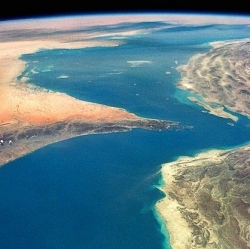
The impact that 3D printing is having on our world is impossible to ignore. It’s not new technology, but its 30-year history has been characterized by deceptively slow growth, until now. 3D printing has recently emerged as a force poised to disrupt a significant portion of the $10 trillion global manufacturing industry.
Already, the printing of standard consumer products, bowls, plates, smartphone cases, bottle openers, jewelry and purses (made from mesh), has gone from a hobby to a nascent industry. Dozens of websites now sell goods made with 3-D printers, and retailers are starting to get in on the action.
It is also affecting the aerospace industry. For instance, SpaceX, the space transport company founded by Elon Musk, recently announced it will 3-D-print much of the rocket engine used in the Falcon 9 launch vehicle.
Boeing currently 3-D-prints over 200 parts for 10 different aircraft platforms. And Planetary Resources, the world’s first private asteroid mining company, is 3-D-printing much of the spacecraft that will travel to and prospect near-Earth asteroids.
An update from Made In Space:
“We were all serial entrepreneurs hunting for a big idea,” says Kemmer. “We wanted to start a company that would help open the space frontier. We were definitely not thinking the way forward was going to be 3-D printing.”
It was the university’s chair of robotics and three-time shuttle astronaut Dan Barry who pointed them in that direction. “We knew a little bit about 3-D printing,” says Chen, “but only because Jason, with his aerospace background, had played with it a little in college.
But when we were doing analysis, just looking at all the different exponential technologies and trying to come up with our idea, Dan Barry kept wandering over and telling us he had been to the International Space Station and wow, having a 3-D printer on the ISS would sure be useful.”
This led to the birth of Made in Space, humankind’s first off-world 3-D printing company. Their first offering, launched to the ISS in the fall of 2014, is fairly simple: a 3-D printer that prints plastic parts. In itself, this will bring on a manufacturing revolution of sorts. “The first 3-D printers on the ISS will be able to build objects that could never be manufactured on Earth,” says Kemmer. “Imagine, for example, building a structure that couldn’t withstand its own weight.”
Made in Space’s next iteration will be able to print with multiple materials, including both plastics and metals, which means that sometime in the next five years, 60 percent of the parts in use on the ISS will be printable. And just behind this version is the real game changer: a 3-D printer capable of printing electronics.
Of course, the big dream is to be able to create 3-D printers capable of printing entire space stations in space and, even better, to do it with materials mined from space. Once this becomes possible, the creation of off-world habitats (i.e., space colonies) becomes a viable reality. “Imagine being able to colonize a distant planet by bringing nothing but a 3-D printer and some mining equipment,” says Chen. “It might sound like science fiction, but the first steps toward making it a reality are happening in our lab right now, and aboard the ISS.”
See PlanetTech’s Interview with Made In Space
